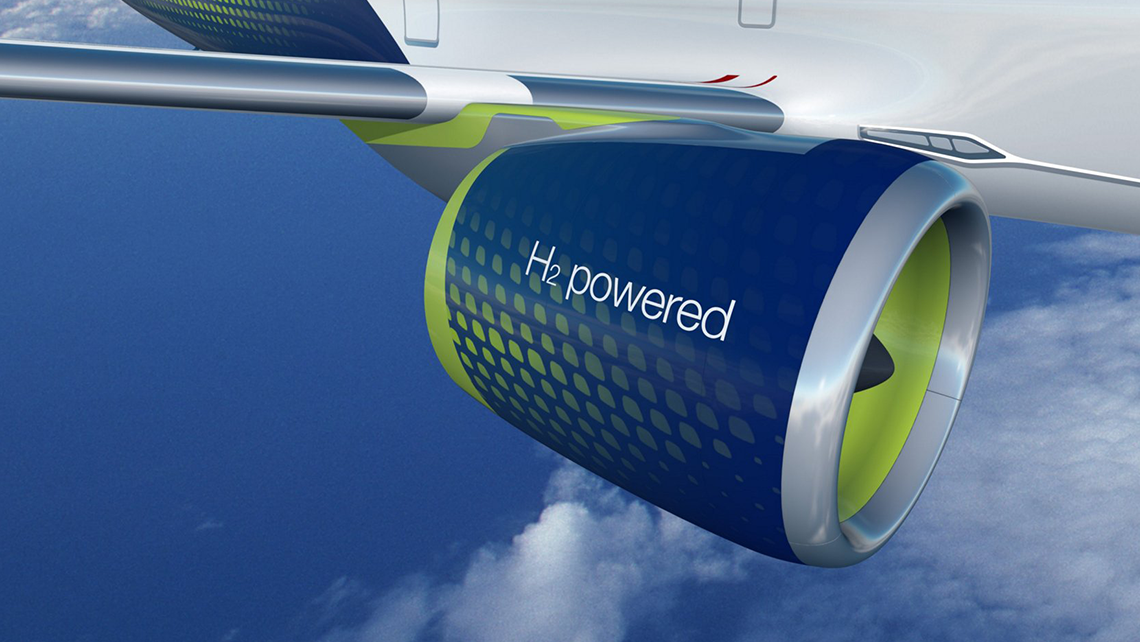
How can kerosene-powered aircraft, which pollute the air and deplete the ozone layer to such an extent, be replaced by a green alternative? Until now, it seemed unthinkable that hydrogen-powered fuel-cell aircraft could fly around the world. However, research and development has recently led to a successful series of experimental flights that could offer hope. Is it possible that we don't have to give up flying while not polluting the planet's atmosphere?
A promising beginning
Although hydrogen-powered aircraft have only recently 'taken off', they have already managed to allay the concerns of some sceptics about more sustainable aviation. Although current prototypes are not yet capable of flying across the ocean, their concept could help develop better, more efficient and larger aircraft in the coming years. Canary Media highlighted on 2 August 2023 that two California-based startups have recently made a number of successful experimental flights. They used experimental propeller-driven aircraft powered by hydrogen gas fuel cells. In both prototypes, existing turboprops were modified to accommodate hydrogen fuel technology, using slightly different methods.
Special aircraft and their operations
The electric motor that powers aircraft is not powered by batteries, but by hydrogen stored inside the aircraft. The hydrogen for the electric motor is stored in gaseous form in tanks at the rear of the aircraft. The hydrogen is delivered to the electric motor, where the miracle happens. In the nacelle (the engine compartment under the wing of the aircraft) next to the engine, the hydrogen meets the compressed air, which it mixes with in a series of fuel cells. The system uses 6 fuel cell arrays, each consisting of hundreds of individual fuel cells. These fuel cell arrays create the electricity that powers the engine. The fuel cell is a passive device with no moving parts, so the energy it generates comes in the form of direct current. This is converted through inverters into the alternating current needed to drive the engine.
It is in the designers' interest to replace the hydrogen gas form with a liquid form, as the latter takes up less space and is not so heavy. These tanks must be stored at very cold temperatures and the liquid hydrogen must be converted into gas before it is used in the fuel cells. Although this type of liquid hydrogen system still takes up more space than conventional aviation fuel, it is a better solution than storing hydrogen in gaseous form.
Reducing emissions
Cutting emissionsAir transport has gradually recovered after the coronavirus epidemic that spread around the world in 2020 eased. Although the numbers are still below pre-pandemic levels, the International Energy Agency (IEA) expects them to exceed them by 2025.Every aircraft in the sky emits carbon dioxide, which last year amounted to about 800 tonnes.To ensure a sustainable future, the IEA estimates that nations must keep greenhouse gas emissions below 1,000 tonnes by the end of the decade. Unfortunately, the organisation currently believes that the aviation industry is "not on track" to meet this target.
While conventional aircraft fuels result in carbon dioxide emissions and particulate pollution, the hydrogen system in this case produces water vapour and heat. But this is just one way in which aircraft manufacturers are striving to design aircraft that are less harmful to the planet. Companies are working on aircraft that run on batteries, create synthetic aviation fuels and, in the current case, use hydrogen-powered fuel cells.

For many years, industry experts have largely agreed that hydrogen-powered aircraft are not economically or logistically feasible, given, for example, the large space requirements for hydrogen cylinders. However, over time, both Universal Hydrogen and ZeroAvia are looking to move to liquid hydrogen, which offers greater performance while taking up less space.

For many years, industry experts have largely agreed that hydrogen-powered aircraft are not economically or logistically feasible, given, for example, the large space requirements for hydrogen cylinders. However, over time, both Universal Hydrogen and ZeroAvia are looking to move to liquid hydrogen, which offers greater performance while taking up less space.
Flying into the future
Based on current technology, the use of hydrogen-powered aircraft is likely to remain limited to shorter distance journeys, but this change alone could result in a significant reduction in emissions for airlines. According to a recent report by the International Council on Clean Transportation, a converted fuel-cell aircraft generates 33 percent less carbon dioxide than 'e-kerosene', fuel-powered vehicles made from water, carbon dioxide and electricity.


Hydrogen-powered aircraft would be far from the only ones to strive for decarbonisation. Last September, a battery-powered aircraft called Alice made its first flight in Washington state, and other companies such as Joby Aviation and Beta Technologies are working on smaller battery-powered electric aircraft. Universal Hydrogen is not the only company using hydrogen to power aircraft. In February last year, Airbus announced that it would use a special giant A380 aircraft to test hydrogen technology, and in November an electric engine that also runs on hydrogen fuel cells was unveiled.
"The issue of creating sustainable aviation has plagued the green movement for decades," said Dale Vince, an environmental entrepreneur who plans to use ZeroAvia's engine for passenger transport between England and Scotland. "The desire to travel is deeply ingrained in the human psyche, and zero-emission aircraft powered by renewable energy will allow us to explore our fascinating world without harming it."




